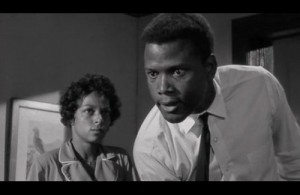For All the World to See: Film and the Struggle for Civil Rights
For All the World to See: Film and the Struggle for Civil Rights is an online festival that explores film’s role in examining the problem of racism and segregation and in influencing the historic fight for racial equality and justice. The nature of film—stories that are played out over time in scenes that are sometimes long and complex—makes its presentation unsuited to the environment of the museum exhibition. Thus, the film component of For All the World to See will concentrate on complete works, as opposed to the fast-paced clips from television and newsreels featured in the exhibition and on the website.
The festival’s online format allows you to experience it in your home—or at school or in the library—since most of the titles are commercially available on DVD. Its seventeen films are accompanied by short essays that discuss their relevance and connection to the civil rights movement, written by the members of the festival’s selection committee: Michele Wallace, professor of English and film studies at the City College of New York and the CUNY Graduate Center; David Roediger, Kendrick C. Babcock Professor of History at the University of Illinois, Urbana-Champaign; and Maurice Berger, For All the World to See curator and project director.
For All the World to See: Film and the Struggle for Civil Rights includes works from before the modern movement (Show Boat, Stormy Weather), as well as movies produced in its wake (Killer of Sheep, White Dog). Some films directly address the subjects of racism and segregation (The Defiant Ones, Odds Against Tomorrow, A Raisin in the Sun, To Kill a Mockingbird, Nothing But a Man, Guess Who’s Coming to Dinner, Watermelon Man, Shaft). Others do so indirectly or metaphorically (Carmen Jones, The Intruder, Jazz on a Summer’s Day). No matter their approach, each of these exceptional motion pictures testifies to the power of visual culture to challenge prevailing ideas and inspire new ways of thinking about race in America.

